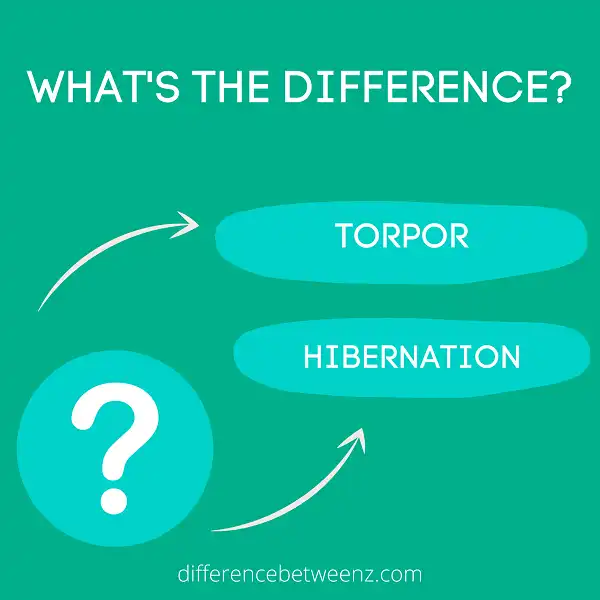Hibernation and torpor are both states of reduced activity, but they are not the same thing. Hibernation is a state that some mammals enter in winter, while torpor is a state that birds and insects often enter to save energy. Understanding the difference between hibernation and torpor can help you better understand these animal behaviors.
What is Torpor?
- Torpor is a state of decreased physiological activity in an animal. When an animal enters torpor, its body temperature and heart rate drop, and its metabolic rate slows down. This decrease in activity helps the animal to conserve energy during periods of food scarcity or extreme temperatures.
- Torpor can be temporary, lasting only a few hours or days, or it can be prolonged, lasting for weeks or even months. Some animals enter torpor on a regular basis, such as hummingbirds, which enter torpor every night.
- Other animals only enter torpor during times of stress, such as when they are ill or injured. While in torpor, animals are often less responsive to their surroundings and may appear to be asleep. However, they can usually be aroused if necessary, and they will return to their normal state once the period of stress has passed.
What is Hibernation?
- Hibernation is a state of dormancy that animals enter during periods of cold weather or scarce food. During hibernation, animals slow their heart rate and breathing, and they lower their body temperature. As a result, they use less energy and can survive on stored fat reserves.
- Some animals, such as ground squirrels, complete hibernation in a single session lasting several months. Others, such as brown bats, may enter and exit hibernation multiple times over the course of a winter.
- Hibernation is beneficial for animals because it allows them to conserve energy and avoid harsh conditions. However, it also carries some risks, as prolonged periods of dormancy can lead to dehydration and muscle atrophy. For this reason, animals must carefully monitor their health during hibernation to ensure a successful return to activity in the spring.
Difference between Torpor and Hibernation
- Torpor and hibernation are both states of reduced activity and metabolism in animals, but there are some key differences between the two. Torpor is a temporary state that can be induced by changes in the environment, such as decreased temperature or decreased food availability.
- Animals in a state of torpor have a lowered body temperature and heart rate, and they may cease all movement for extended periods of time. Hibernation, on the other hand, is a much deeper state of dormancy that is typically brought on by the onset of winter.
- Animals in hibernation have a dramatic decrease in body temperature and metabolic rate, and they may sleep for months at a time. While both torpor and hibernation allow animals to conserve energy during periods of stress, hibernation is usually a longer-term strategy that is used when conditions are expected to be unfavorable for an extended period of time.
Conclusion
Torpor and hibernation are two states of reduced activity that animals can enter. Torpor is a state of reduced activity that is typically short-term, while hibernation is a state of reduced activity that can last for months or even years. -The primary difference between torpor and hibernation is the length of time each state lasts. Torpor usually only lasts for a few hours or days, while hibernation can last for months or years. There are some animals that use both torpor and hibernation depending on the circumstances. For example, bears will go into a deep torpor during the winter to save energy, but they will also occasionally wake up and move around to eat if there’s enough food available.


